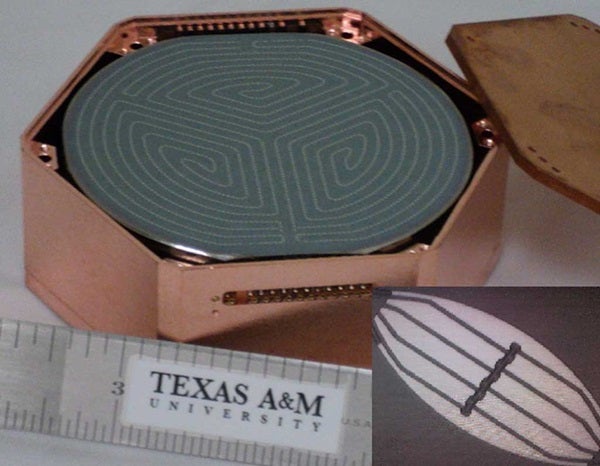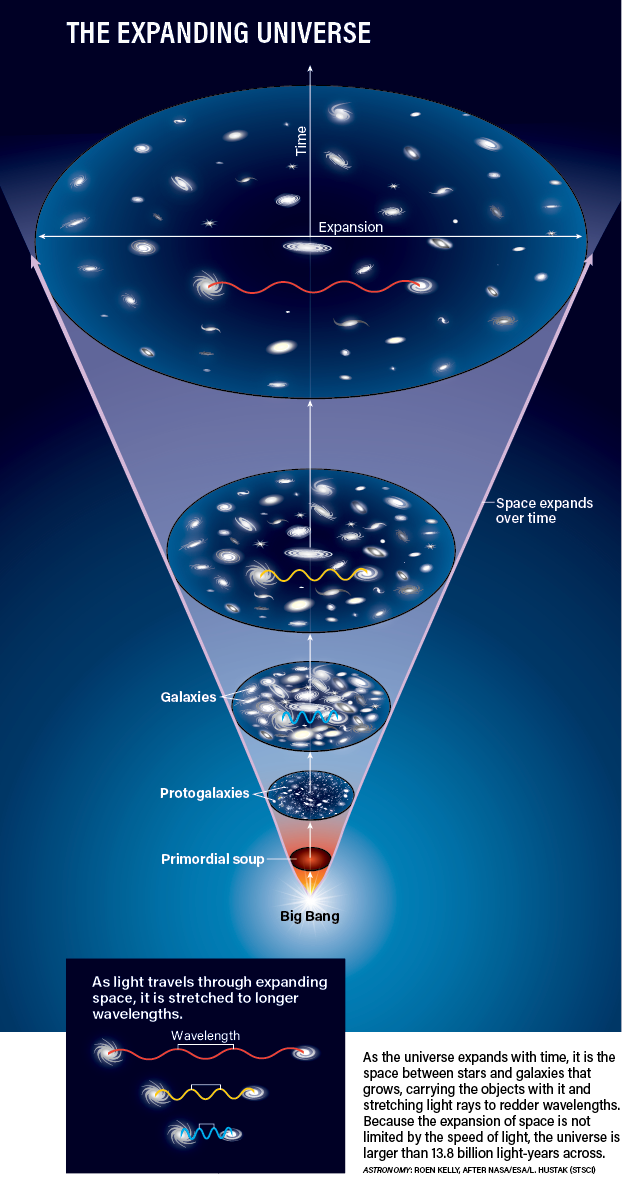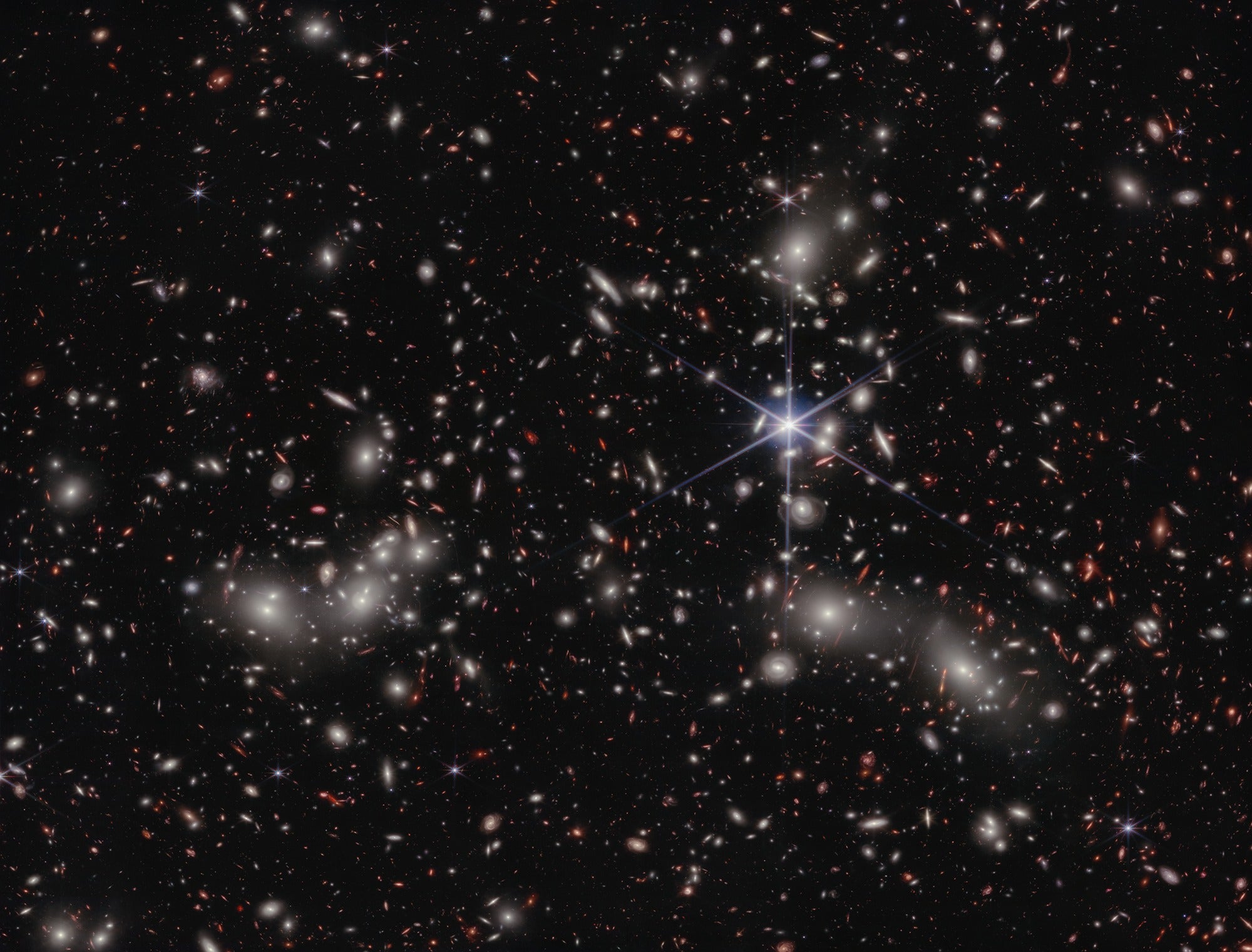Scientists with the international Super Cryogenic Dark Matter Search (SuperCDMS) experiment are reporting a WIMP-like signal at the 3-sigma level, indicating a 99.8 percent chance that the detection is a hint of the mysterious substance dark matter that is believed to hold the cosmos together but to date has never been directly observed.
“In high-energy physics, a discovery is only claimed at 5-sigma or better,” said Rupak Mahapatra, a high-energy physicist at Texas A&M University. “So this is certainly very exciting, but not fully convincing by the standards. We just need more data to be sure. For now, we have to live with this tantalizing hint of one of the biggest puzzles of our time.”
Notoriously elusive, WIMPs rarely interact with normal matter and therefore are difficult to detect. Scientists believe they occasionally bounce off, or scatter like billiard balls from, atomic nuclei, leaving behind a small amount of energy. That energy is capable of being tracked by detectors deep underground, particle colliders such as the Large Hadron Collider at the European Organization for Nuclear Research, and even instruments in space like the Alpha Magnetic Spectrometer mounted on the International Space Station.
The CDMS experiment, located a half-mile underground at the Soudan mine in northern Minnesota and managed by the U.S. Department of Energy’s Fermi National Accelerator Laboratory, has been searching for dark matter since 2003. It uses highly sophisticated detector technology and advanced analysis techniques to enable germanium and silicon targets that are cryogenically cooled (to almost absolute zero temperature at –460° Fahrenheit [–273° Celsius]) to search for the rare recoil of dark matter particles. The search is powered by detectors being fabricated at Texas A&M.
The latest analysis represents comprehensive data gleaned from the largest exposure with silicon detectors during the CDMS-II operation, Mahapatra said. The latter was an earlier phase of the overall experiment that involves more than 50 scientists from 18 international institutions.
“This result is from data taken a few years ago using silicon detectors manufactured at Stanford that are now defunct,” Mahapatra said. “Increased interest in the low-mass WIMP region motivated us to complete the analysis of the silicon-detector exposure, which is less sensitive than germanium for WIMP masses above 15 gigaelectron-volts [one GeV is equal to a billion electron volts] but more sensitive for lower masses. The analysis resulted in three events, and the estimated background is 0.7 events.”
In addition to being heavily involved in the data analysis, the Texas A&M group performed the crucial calibration of the silicon detectors, guaranteeing that the signal would look the same regardless of which of the eight detectors in the mine it might appear in, Mahapatra said.
While the latest simulations involved in the experiment could not rule out statistical fluctuations as the cause of the “tantalizing” particle hint, Mahapatra said, the team believes these fluctuations would rarely produce a similar energy distribution, which they interpret instead as spin-independent scattering of WIMPs. The result is certainly encouraging and worthy of further investigation, he said, but he cautioned that it should not be considered a discovery.
“We are only 99.8 percent sure, and we want to be 99.9999 percent sure,” Mahapatra said. “At 3-sigma, you have a hint of something. At 4-sigma, you have evidence. At 5-sigma, you have a discovery.
“In medicine, you can say you are curing 99.8 percent of the cases, and that’s OK. When you say you’ve made a fundamental discovery in high-energy physics, you can’t be wrong. Given the money involved — $30 million in this case — it has to be extremely precise. With a 99.8 percent chance, that means if you repeated the same experiment a few hundred times, there is one chance it can go wrong. We want one out of a million instead.”
In 2010, the collaboration, using germanium detectors, reported detecting two events in the signal region and an estimated background of 0.9 events. The researchers eventually concluded that these events more likely were attributable to surface electrons leaking rather than actual nuclear recoils.
For the past four years, Mahapatra and his Texas A&M team have been developing the larger, more advanced detectors needed for the project’s current phases, from SuperCDMS to the even more sophisticated Germanium Observatory for Dark Matter experiments. They are developing both germanium and silicon detectors to create dual-threat devices that are much bigger, better, and cheaper. His laboratory’s new 6-inch-diameter silicon detectors represent a world-first in cryogenic detection and are about 30 times more sensitive than the individual silicon detectors behind this latest result, according to Mahapatra.
“The industrial manufacturing and fabrication facility we have set up here at Texas A&M has enabled us to bring down the cost from $350,000 per kilogram to about $40,000 per kilogram,” he said. “We also have a 90 percent success rate, versus the previous 20 percent rate for the original silicon and germanium devices.”










